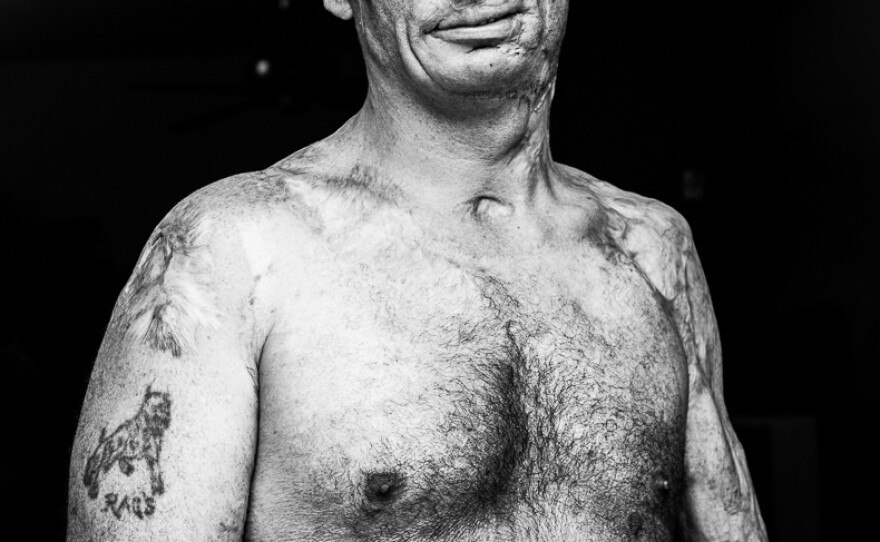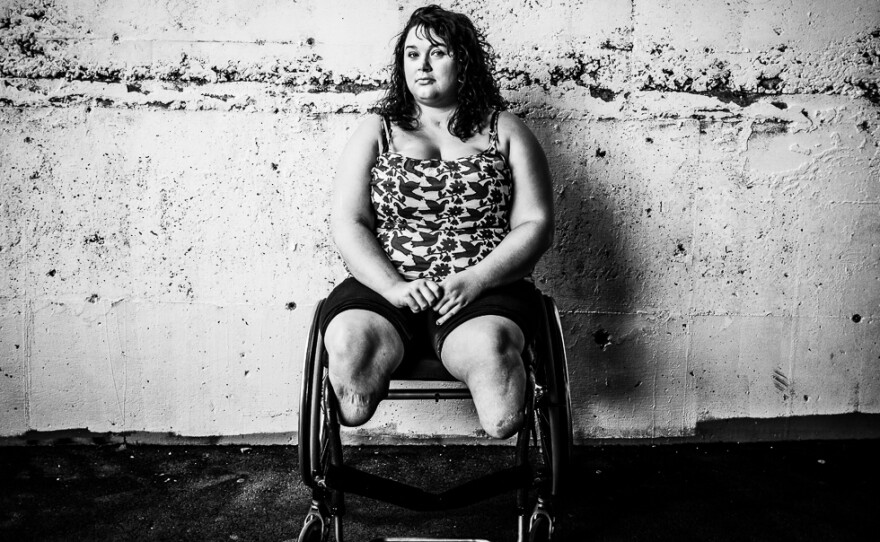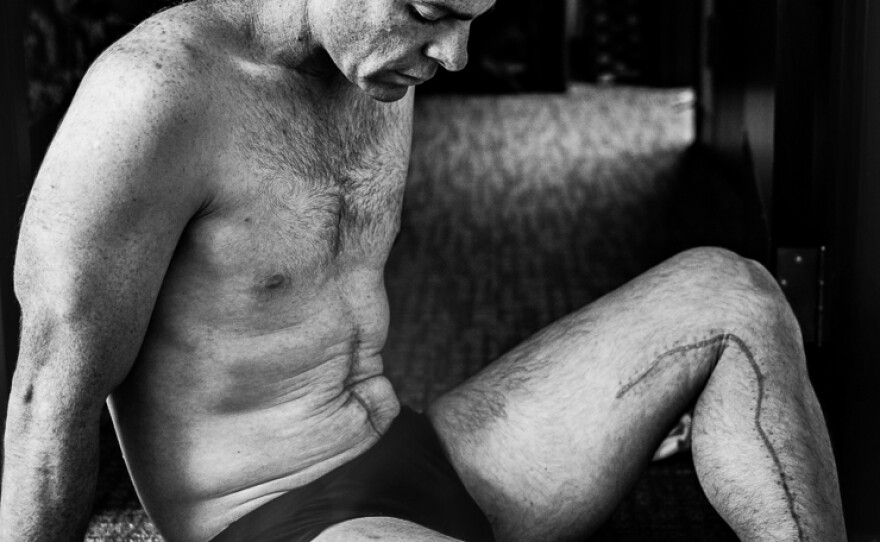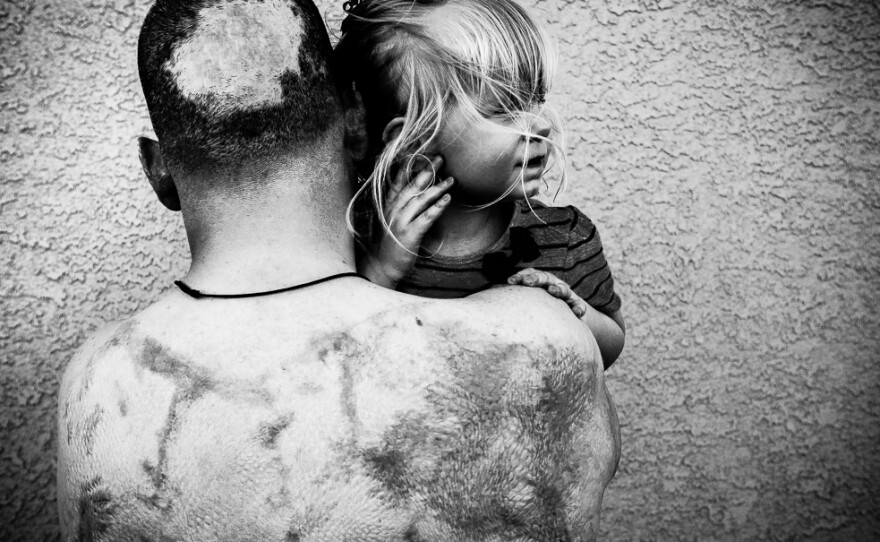







It's impolite to stare. But when it comes to severely injured soldiers, maybe we don't look enough; or maybe we'd rather not see wounded veterans at all. That's the message you get from photographer David Jay's Unknown Soldier series. Jay spent three years taking portraits of veterans returning from the wars in Iraq and Afghanistan, but before that — for nearly 20 years — he was a fashion photographer. His stylish, artful images appeared in magazines like Vogue and Cosmopolitan. He says, "The fashion stuff is beautiful and sexy — and completely untrue."
Truth became the focus of Jay's work for the first time about 10 years ago, when he started The SCAR Project, a series of portraits of women, naked from the waist up, with mastectomy scars. Around the time he was taking those photos, he was also trying to comprehend the news coming from Iraq and Afghanistan. "We hear about 'this number of men were killed' and 'this many were injured,' " Jay says, "and we think of them — maybe they got shot — or we don't really picture what these injured men look like."
So Jay visited Walter Reed National Military Medical Center, and one of the first injured soldiers he met there was Capt. Nicholas Vogt. In 2011, an explosive device detonated under Vogt's feet in Afghanistan, nearly killing him. His legs had to be amputated. "I had never seen anything like it," Jay says. "It appeared that he ended at his waist."
He asked Vogt if he would be willing to be photographed. "And Nicholas was very kind and said, 'Listen, I understand what you're doing but I don't think I can take part in that, certainly [not] right now.'" About a year later, Jay was back at Walter Reed and from across the room he heard someone yell, "Hey, photographer!" This time, Vogt wanted to participate. He'd been working hard at his recovery and seeing results. He was swimming a lot and he had a girlfriend (a nurse at Walter Reed who is now his fiancé). Vogt gave Jay permission to take his picture, but he had some parameters: "I wanted to make sure there was action, it was movement," Vogt says. "Because I didn't want to portray myself as someone that's just waiting for medical retirement and going to be stationary for the rest of my life."
David Jay delivered. In his portrait of Vogt, he captures that sensation of jumping into a swimming pool and feeling your body descend to the bottom. Vogt's arms are stretched out and his eyes are tightly shut. Beneath his black swim trunks, there is nothing.
Vogt doesn't know how other people will react to the portrait, but he's glad he did it. "I just know I felt fulfilled afterwards," he says. "I felt like it represented me as a person. Yeah, I was happy with the result."
Other portraits in Jay's Unknown Soldier series are more graphic. Take Army Spc. Jerral Hancock: On his 21st birthday, the tank he was driving in Iraq was hit by a roadside bomb. The explosion sent shrapnel into his spine, paralyzing him. Jay's photographs of Hancock show him with his little boy — in one their eyes are fixed on each other and in another they're looking at the camera. In both, the veteran is bare-chested, revealing his tattoos and the mangled skin and bone where his left arm was amputated.
Then there's Sgt. Joel Tavera: When a rocket hit his Humvee in Iraq, he received third-degree burns across two-thirds of his body, including almost all of his face.
Jay believes these wounds belong to all of us: "You can imagine how many times each of these men and women have heard a parent tell their child, 'Don't look. Don't stare at him. That's rude.' I take these pictures so that we can look; we can see what we're not supposed to see. And we need to see them because we created them."
Jay believes seeing is one step closer to understanding.
The Library of Congress has acquired images from his Unknown Soldier collection as part of its visual documentation of the wars in Iraq and Afghanistan.
Copyright 2015 NPR. To see more, visit http://www.npr.org/.






